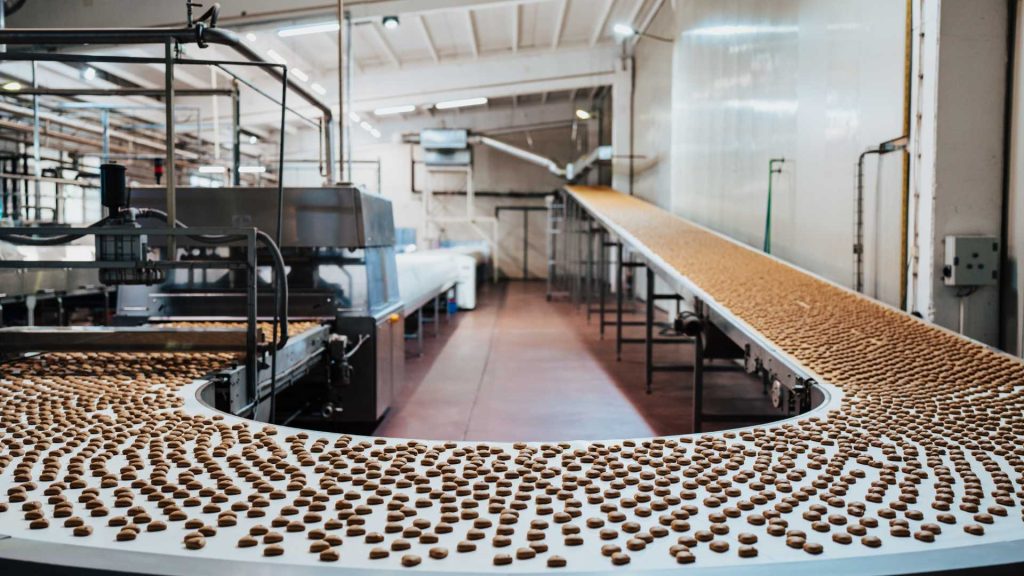You are right; chocolate is among the most popular food-manufacturing items worldwide. As the chocolate manufacturing market grows tremendously and has enormous competition, many have gotten involved in this industry only to make a good fortune commercially. But do they succeed? Even though it is possible to earn a handsome amount through this, the chances of facing failure are very high because of the number of mistakes we make in chocolate’s manufacturing process. We will discuss the most significant errors in chocolate manufacturing that you should be aware of to prevent.
7 significant errors in chocolate Manufacturing
The chocolate manufacturing process is a delicate dance of timing, temperature, and movement, with each variable affecting the quality of the final product. Executing the strategy requires a careful balance between these variables, but some steps require more attention than others. These seven errors have the most significant negative impact on the end product’s quality:
Not allowing enough time for tempering.
The tempering process involves heating the chocolate to a specific temperature and cooling it back down before putting it into molds. It ensures that the chocolate will maintain its shape when it’s cooled and have a nice snap when you bite into it. Allowing enough time to temper chocolate in the manufacturing process is essential. It ensures that the pieces are glossy and come together correctly, and you should make large volumes of components.
When making any finished product with chocolate, you must give it enough time for the heat to reduce and the ingredients to mix properly. If you don’t allow enough time, you may end up with chalky or greasy products, or they may break when shipped or consumed. It can reflect poorly on your company’s brand and cause people to lose trust in what you offer, so make sure you’re allowing enough time to temper your process.
Getting impatient while waiting for tempering to finish
Chocolate manufacturers often have to wait for the tempering process to finish, which can be time-consuming. There are some ways to speed up the process without risking quality.
If your chocolate isn’t tempering as quickly as you need it to, try using a marble slab instead of a metal one; this will help reduce heat transference and cool the chocolate more quickly. Finally, remember that if you’ve heated your chocolate above 120 degrees Fahrenheit (49 degrees Celsius), you’ll need to let it cool until it reaches 88 degrees Fahrenheit before reheating it.
Inconsistent chocolate poured into tempering equipment
First, look at some of the problems caused by inaccurate measurements.
For example, you may measure the amount of chocolate you put into your tempering equipment by filling your bucket with water until the chocolate measures one-third full. But what happens when you need more? You can’t just use more water—you’ll have to add more chocolate! And now your formula will be off because there’s more water in the mix than before.
It is essential to pay attention to how much chocolate you pour into tempering equipment. Too little chocolate will not affect the quality of your product, but too much could be harmful if your equipment doesn’t have enough room for the batch.
If you find yourself facing this issue, here are some things to check:
- Is there a channel clog conveying melted chocolate into your tempering equipment? Clean this with a butter knife or other sharp utensils.
- Have you calibrated your tempering equipment recently? It would be best to do this every month to ensure everything works properly.
- Are there any cracks in the pipe that supply melted chocolate from the Melter to your tempering equipment? If so, it could cause air bubbles to form in your tempered chocolate.
The best way to avoid this problem is by carefully measuring your ingredients using a scale or measuring cups each time before pouring them into the machine.
Warming tempering equipment to tempering process
If you perform one of these steps too quickly, the results can be disastrous, affecting the taste and texture of the finished product. An experienced chocolate manufacturer who knows the tempering equipment’s ins and outs can use a warming tempering machine to speed up this process without sacrificing quality.
However, warming tempering equipment can overheat the chocolate if misused, ruining it. The solution is to improve the tempering process while reducing manufacturing time by 25%.
Using a combination of high-grade boiling stones and good old-fashioned elbow grease, they have created an entirely new kind of tempering equipment that can increase the temperature of the tempering vats by up to 10 degrees Celsius per minute.
Since this new equipment reduces manufacturing time by 25%, it also reduces associated costs by 30%, making these warming tempering machines an affordable option for any size or type of business.
Skipping test chocolate after tempering
Good tempering is crucial because it makes chocolate more resistant to external forces. That includes scratches, temperature changes, and other stresses that can compromise the quality of the chocolate.
Proper tempering ensures that the chocolate will maintain its shape and texture when handled while still adhering to high aesthetic standards.
The tempering process is not complex, but it must be done precisely to accomplish its purpose. Chocolatiers must first heat the chocolate to between 104°F and 108°F, then cool it down between 92°F and 94°F before finishing with another heating phase at 82°F to 86°F.
When you follow this process correctly, the cocoa butter in the chocolate will solidify in a particular pattern based on specific factors: time of tempering or cooling, type of chocolate, and even humidity. It is what gives each type of chocolate its unique look and feel.
Test the tempering process after it is completed to ensure it is correct. If the tempering is complete, the chocolate is ready for packaging and selling once it is tempered again. The incorrect tempering of chocolate will affect its taste and appearance, two crucial aspects of selling a product.
improper packaging methods
Shipping and storage temperature can significantly impact chocolate quality. Chocolate can be damaged if the temperature shifts during shipping or the packaged product is not stored correctly.
The critical aspect of chocolate production is keeping it away from moisture, heat, and light; this requires careful packaging design to ensure that it retains its perfect texture and taste until consumption. Many steps ensure that your product is appropriately packaged and stored for shipping during the chocolate manufacturing process.
Improper packaging methods could lead to a wide variety of issues, including:
- Damage to the final product
- Loss of sanitation during the packaging process
- Incorrect labeling/packaging of products
- Injury of employees who are handling packaging equipment
Failing to clean equipment thoroughly before use
In particular, many manufacturers have been accused of failing to thoroughly clean equipment before use in chocolate manufacturing.
To avoid these issues, manufacturers must take extra care to ensure that each piece of equipment has been adequately sanitized before it is used to create high-quality products. The most effective way to do this is by using an autoclave that delivers steam at high pressures and temperatures to effectively kill dangerous pathogens on any equipment or surface it touches.
The FDA recommends that all equipment used in the production of chocolate be thoroughly cleaned before its use; ideally, equipment should be sanitized with a chlorine solution or other sanitizing agents and rinsed thoroughly with clean water before use.
As an alternative to direct cleaning and sanitizing of equipment, manufacturers may store their equipment in a separate room or locker used only to store chocolate-making equipment until used again. When used equipment is cleaned and sanitized before storage, steps should be taken to ensure the sanitizing solution does not contact the stored food.

Sangeetha brings 20 years of experience in Information Technology which includes Solution architecting, building micro services, research, and evaluation of business applications, integrating apps.

